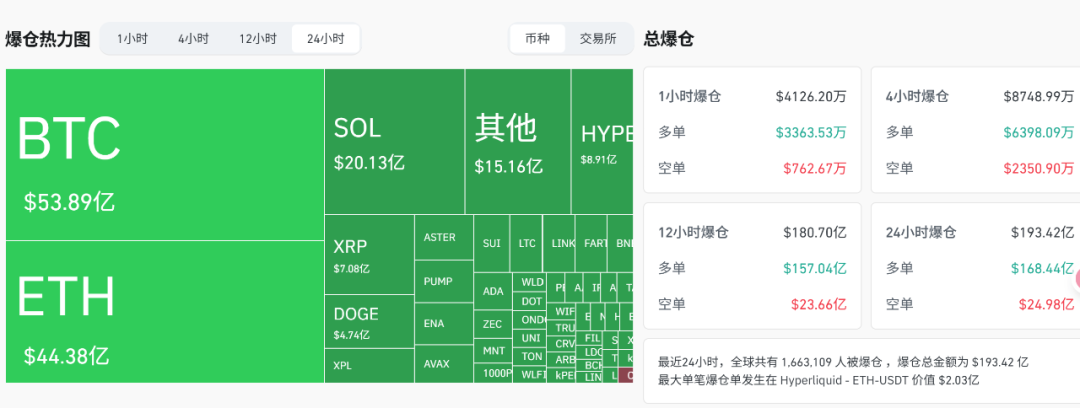On October 10, 2025, the cryptocurrency market faced an epic deleveraging storm.
As fervent bullish traders were forced to confront the iron laws of the market, over $20 billion in leveraged positions were liquidated within an hour, Bitcoin plummeted 15% in a single day, and altcoin liquidity nearly dried up, leaving even seasoned players caught off guard by the blood-red charts.
This massacre was ignited by multiple macroeconomic headwinds: escalating trade tensions triggered panic selling of risk assets.
Bitcoin fell sharply by 13% within an hour, while altcoins experienced even more severe slippage. Tokens like ATOM approached near-zero on illiquid exchanges; although some ground was later recovered, the market had already suffered significant damage.
The total liquidation across centralized and decentralized platforms in the entire market surpassed $20 billion, setting a record for the largest single-day liquidation in cryptocurrency history.

This was not a gentle decline—weeks of accumulated bullish sentiment and high open interest evaporated overnight, with $65 billion in open positions disappearing from the system, causing the market landscape to revert to levels seen months prior.
On the surface, it appeared to be a "retail collapse," but Scott Melker from "Wolf of Wall Street" and several analysts pointed out the truth: "The liquidated positions were not from retail investors, but from crypto-native traders using leverage on decentralized exchanges, representing a leveraged washout of the most steadfast holders."
Data confirms this: new market entrants primarily allocated funds to spot ETFs or mainstream assets, avoiding the impacts of DeFi leverage mechanisms. The real casualties were high-leverage perpetual contract players, predominantly seasoned crypto veterans rather than newcomers.
According to Bitwise fund manager Jonathan's review, the root cause lies in structural flaws in the market; perpetual contracts function as a zero-sum game, and when the solvency of the losing side collapses, it triggers systemic risk.
The surge in volatility led liquidity providers to withdraw, and the thin order books of altcoins caused price collapses, with automatic liquidation mechanisms even mistakenly affecting profitable positions.
Platforms like Hyperliquid profited by acquiring assets at a discount during forced liquidations through on-chain liquidity pools. By the close, even market-neutral precision strategies faced assaults due to operational delays and collateral liquidation issues.
Centralized exchanges, especially for long-tail tokens, became disaster zones, while DeFi demonstrated resilience through strict collateral standards and hard-coded pricing mechanisms.
For instance, protocols like Aave require high-quality collateral to avoid death spirals caused by stablecoin price decoupling. However, pain points remained: the USDe on some exchanges dropped to $0.65, causing related margin positions to evaporate instantly.
Price discrepancies of up to $300 between exchanges created opportunities for arbitrageurs, but more alarmingly, while $20 billion evaporated, spot buying remained stable.
Prices rebounded from extreme lows, and excess leverage in the market was forcibly cleared. As Jonathan stated, the key to survival is not only directional judgment but also operational capability and the art of liquidity management.
Bitwise CEO Hunter Horsley commented, "A 15% drop on the largest liquidation day in Bitcoin's history highlights its intrinsic strength; this train is unstoppable."
The increasing correlation between cryptocurrency and the macro environment means that such deleveraging is both an inevitable market adjustment mechanism and a necessary growing pain for reshaping a healthy ecosystem.
As the brutality of leverage becomes undeniable, every participant must remember: risk control is always more important than the pursuit of returns.
免责声明:本文章仅代表作者个人观点,不代表本平台的立场和观点。本文章仅供信息分享,不构成对任何人的任何投资建议。用户与作者之间的任何争议,与本平台无关。如网页中刊载的文章或图片涉及侵权,请提供相关的权利证明和身份证明发送邮件到support@aicoin.com,本平台相关工作人员将会进行核查。




